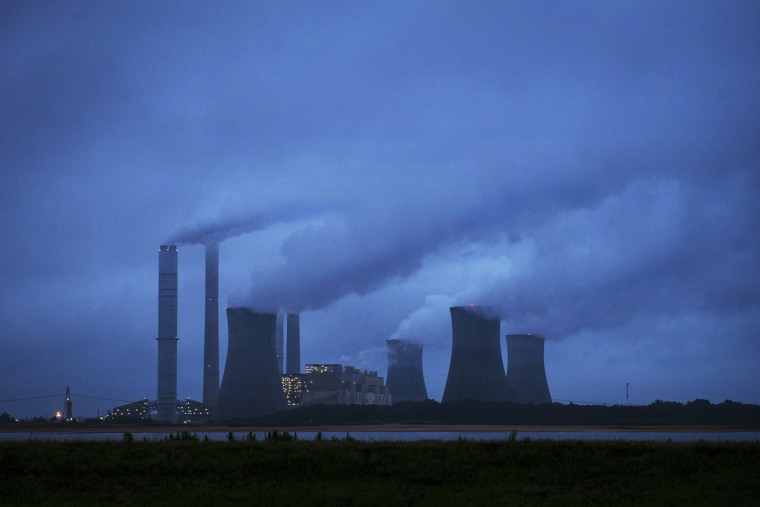No more tinkering around the margins. In his inaugural address six months ago, President Barack Obama emphasized the importance of climate change mitigation to his second-term agenda, and since then the White House has unveiled a series of announcements intended to keep the issue in the public eye.
In February, Secretary of State John Kerry gave an unusually strident speech on global warming in which he belittled climate change deniers as members of the Flat Earth Society. And last month, the White House aggressively promoted a climate report which the president himself described as proof that climate change is "not some distant problem of the future."
But that was all a prelude to the main event. Although the administration's increasingly urgent calls to action were no doubt appreciated by environmental activists, the pace of change did not seem to match the urgency of the environmental crisis. The president's "all-of-the-above" energy strategy continued to embrace fossil fuel investment alongside alternative sources of energy, and the White House continued to equivocate on the proposed Keystone XL pipeline extension, which is viciously opposed by green groups in the U.S. and Canada. Federal reforms to fuel standards and EPA regulations, while encouraging to those same groups, were relatively modest.
Until this week. On Monday morning, the Obama administration set forth a proposal which, if implemented, might very well be the most ambitious climate change mitigation strategy in U.S. history. It would require the entire power sector -- America's largest carbon polluter -- to bring its emission levels 30% below where they were in 2005. And it would require that this happen by the year 2030.
In a Monday speech unveiling the proposal, EPA administrator Gina McCarthy described it as a "critical step forward," and said the projected reduction in fuel emissions would be equivalent to "cancelling out annual carbon pollution from two thirds of all cars and trucks in America." In order to accomplish that goal, state's would be given broad latitude in choosing how to implement the proposed regulation.
"This plan is all about flexibility. That’s what makes it ambitious, but achievable," said McCarthy. "That’s how we can keep our energy affordable and reliable. The glue that holds this plan together, and the key to making it work, is that each state’s goal is tailored to its own circumstances, and states have the flexibility to reach their goal in whatever way works best for them."
Some states are already moving ahead with their own initiatives to significantly reduce power plant emissions. One potential model for how other states could implement the proposed EPA rule is provided by the Regional Greenhouse Gas Initiative, or RGGI (pronounced "Reggie"). McCarthy, who helped implement RGGI when she was overseeing Connecticut's Department of Environmental Protection, has declined to say whether the EPA used the initiative as a model in crafting its own rule. However, she has said that she is "pretty excited" by its progress.
RGGI is a regional cap-and-trade program for power plants in nine east coast states. Since 2005, the program has managed to trim emissions from that sector by 40% in participating states, while adding about $1.6 billion to the regional economy. In a statement [PDF] celebrating Monday's proposed EPA rule, RGGI said its success "demonstrates that market-based carbon reduction programs achieve the most cost-effective emission reductions."
Environmental activist groups were similarly upbeat regarding the proposed rule. Bill McKibben, co-founder of 350.org and a frequent critic of the administration's energy policy, said the EPA's proposal" will help advance the obvious tasks of moving America off coal."
"This is what good organizing does, and more of it will keep the ball rolling," he said in a statement. "Movement pressure is starting to bring results.”
Congressional Republicans were, predictably, less ebullient. House Speaker John Boehner, R-Ohio, described the EPA proposal as "nuts" in a Monday statement.
"Americans are still asking ‘where are the jobs?’ and here he is proposing rules to ship jobs overseas for years to come," he said. "Americans are already paying more for everything and here he is condemning them to higher bills and lower incomes long after he leaves office."
Although the details and scope of the proposed rule were decided by the Obama administration, the decision to regulate power plant emissions was not in the president's hands. Indeed, the Environmental Protection Agency is legally required to issue regulations governing power plant emissions, thanks to the Clean Air Act and the 2007 Supreme Court case Massachusetts v. EPA.
Following the proposed rule's publication, it will now undergo a 120 day public comment period. A finalized version of the rule will be released next year.
